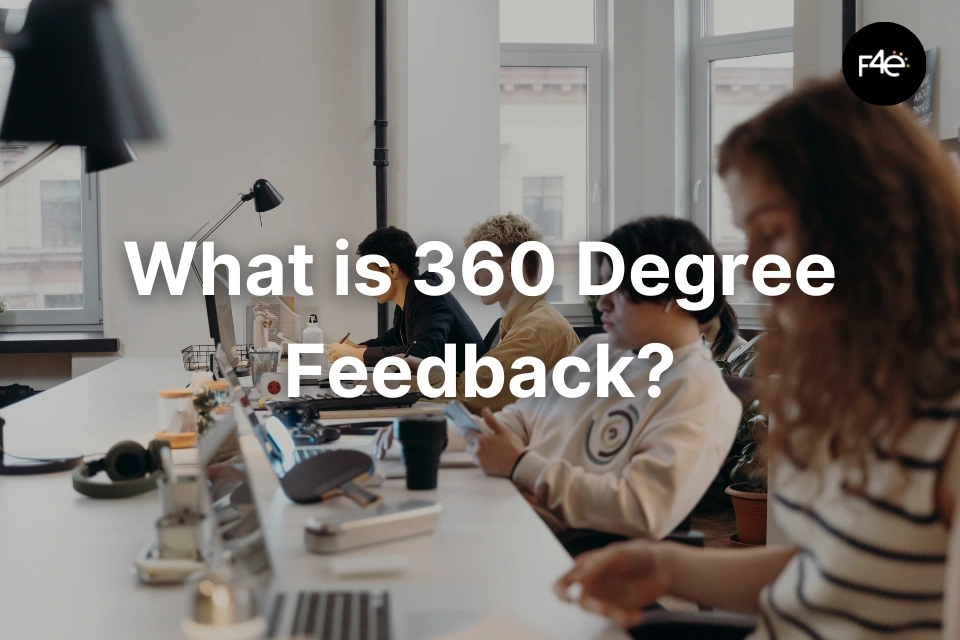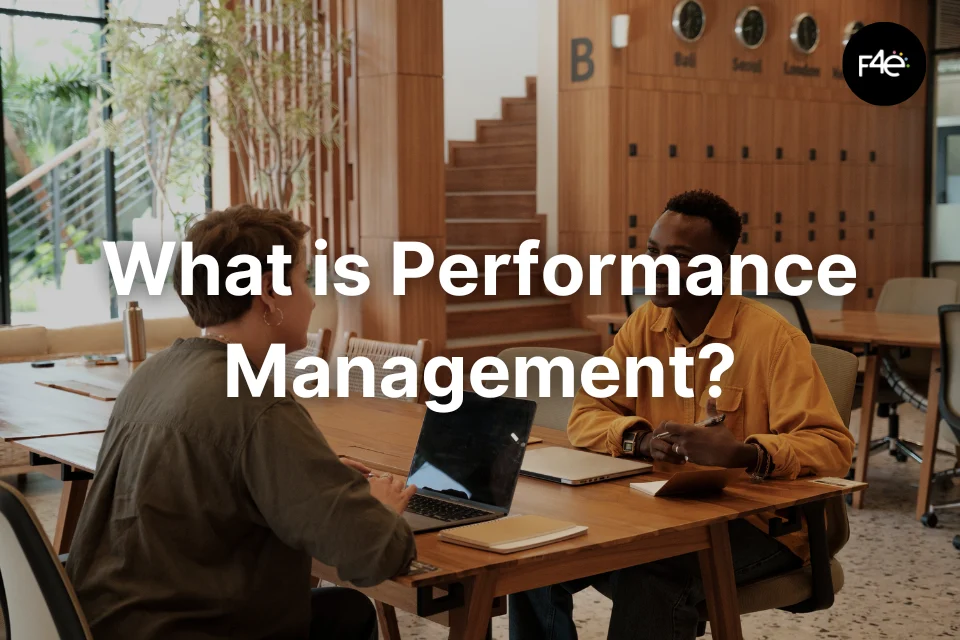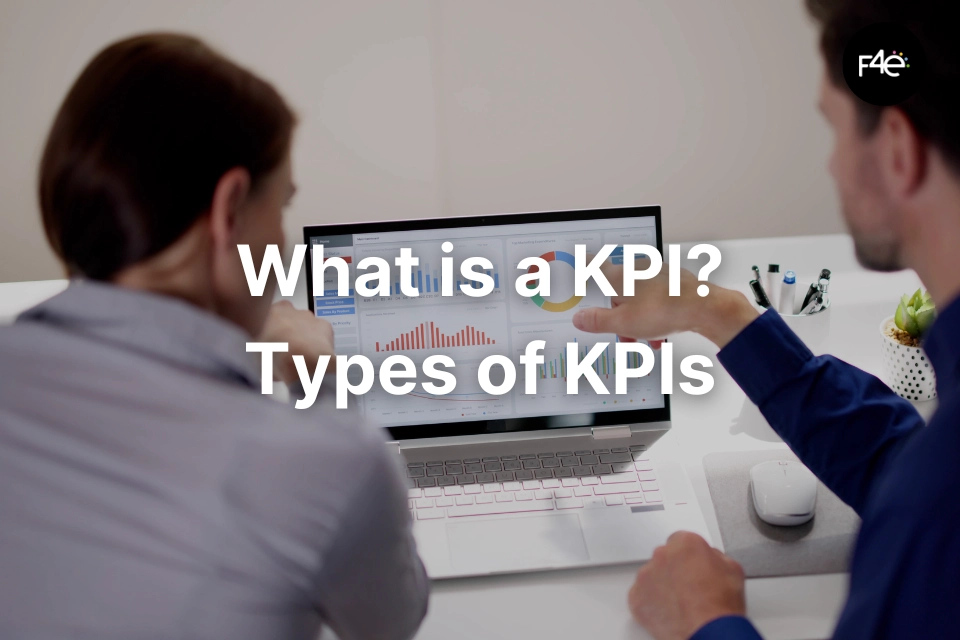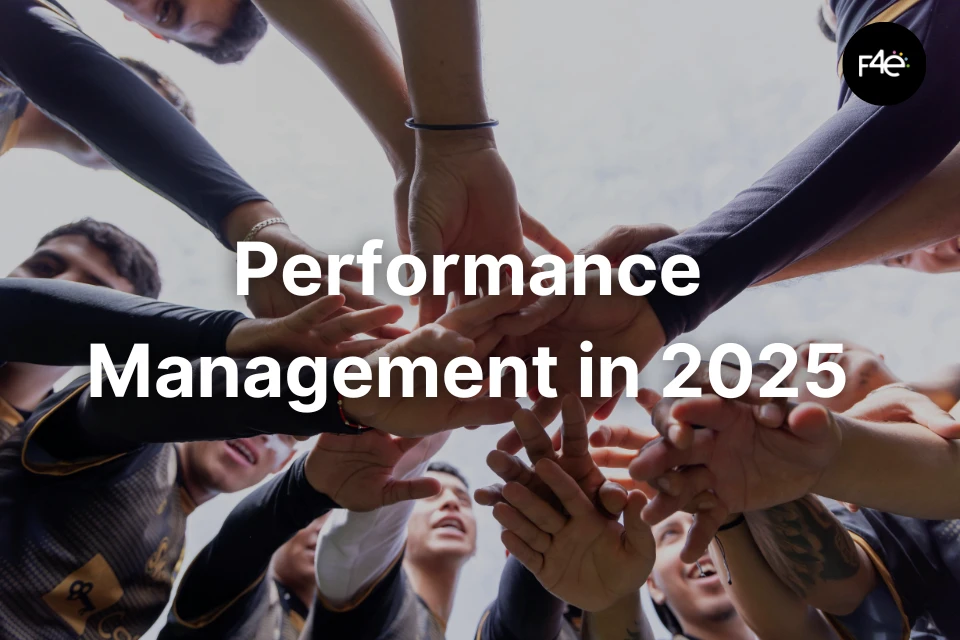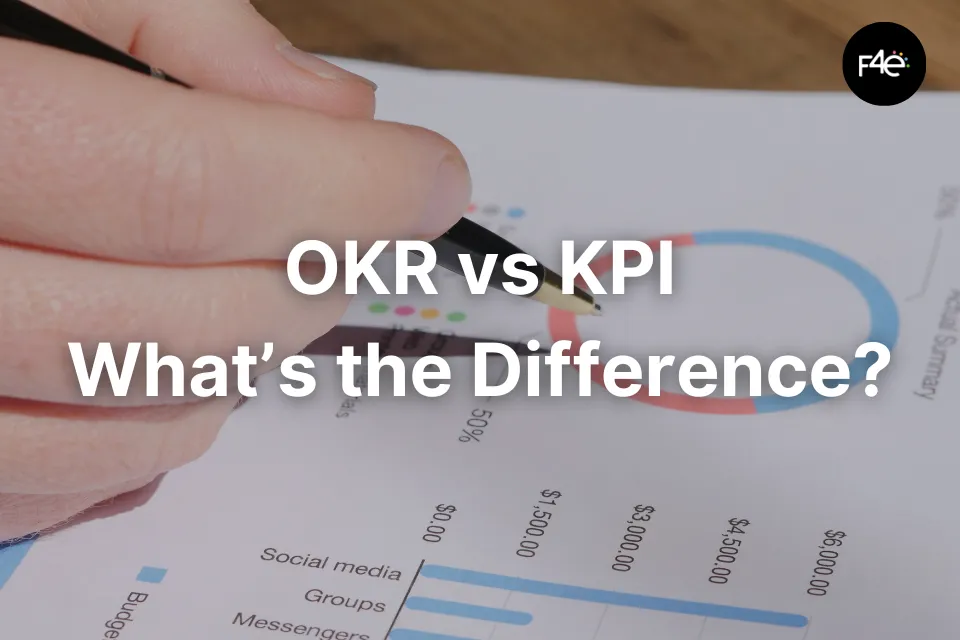Only 45% of organizational leaders believe their organization uses consistent tools for employee performance management. In a workplace where engagement and performance are increasingly interconnected, traditional top-down feedback methods are falling short. 360 degree feedback offers a more comprehensive approach—but what exactly is it, and how can it transform your performance management?
What Exactly is 360 Degree Feedback?
360 degree feedback is a multi-source assessment process where employees receive performance feedback from their entire work circle—managers, peers, direct reports, and sometimes even customers—along with their own self-assessment. Unlike traditional feedback that flows in one direction (typically from manager to employee), 360 feedback creates a comprehensive view of an employee’s performance from multiple perspectives.
The typical 360 degree feedback process includes:
- Self-assessment: The employee evaluates their own performance
- Manager feedback: Traditional top-down evaluation
- Peer feedback: Input from colleagues who work alongside the employee
- Direct report feedback: Bottom-up evaluation from team members who report to the employee
- Optional external feedback: From customers, clients, or other stakeholders

This approach captures behaviors and skills that might be visible to some stakeholders but not others, creating a more balanced and complete picture of performance.
This multi-source approach is a core element of modern 360 degree feedback systems.
Benefits of 360 Degree Feedback
When implemented effectively, 360 degree feedback delivers significant advantages over traditional methods:
1. Reduces Single-Point-of-Failure Bias
Traditional performance evaluations rely heavily on a manager’s perspective, which can be limited by:
- Infrequent direct observation of day-to-day work
- Personal biases or preferences
- Specific management priorities that may overlook other valuable contributions
360 feedback balances this by incorporating multiple viewpoints from people who interact with the employee in different contexts. Companies that adopt continuous performance feedback are 39% more effective at attracting talent and 44% better at retaining it than those that don’t.
2. Increases Self-Awareness
Employees often discover blind spots in their performance when receiving feedback from varied sources. While most leaders believe they’re self-aware, research shows there’s significant room for improvement.
360 feedback helps bridge this gap by:
- Identifying strengths employees may undervalue
- Highlighting impact of behaviors they may not recognize
- Validating self-perceptions when accurate
- Creating healthy cognitive dissonance when self-perception differs from others’ experience
Employees who receive feedback on a weekly basis are over 5 times more likely to find it meaningful, and those receiving feedback in the past week are 4 times more likely to be engaged at work.
3. Strengthens Team Dynamics
The process encourages open communication and transparency across organizational levels:
- Normalizes constructive feedback as a regular part of workplace interaction
- Reduces power dynamics that can inhibit honest communication
- Creates shared language around performance expectations
- Builds mutual accountability between team members
Companies that provide regular feedback report 14.9% lower turnover rates than those who don’t — emphasizing the retention power of continuous communication.
4. Enhances Development Focus
With a broader perspective on strengths and growth areas, employees can create more targeted and effective development plans:
- Prioritizes development needs based on input from multiple stakeholders
- Aligns individual development with team and organizational needs
- Provides ongoing measurement of behavioral change
- Creates clearer connections between behavior and business impact
These benefits make 360 feedback a valuable component of comprehensive performance reviews.
When to Use 360 Degree Feedback
360 feedback can serve different purposes, but timing and intention matter:
Development vs. Evaluation
The most successful implementations typically focus on development rather than evaluation. When used primarily for growth rather than compensation decisions, participants tend to provide more honest feedback.
Recommended Frequency
- Development-focused: 1-2 times per year
- Major career transitions: Before promotion considerations or role changes
- Leadership development programs: As a baseline and progress measurement
Integration Points
360 feedback works best when integrated with:
- Regular 1:1 meetings
- Career development plans
- Leadership training programs
- Team-building initiatives
It should complement, not replace, other performance management tools like OKRs and KPIs.
For maximum impact, integrate 360 feedback with other performance management features.
360 Degree Feedback vs. Other Feedback Methods
Understanding how 360 feedback compares to other methods helps determine when to use each approach:
| Feedback Method | Perspective | Best For | Limitations |
|---|---|---|---|
| Traditional Reviews | Single (manager) | Clear authority decisions | Limited viewpoint |
| Peer Feedback | Horizontal | Team dynamics, collaboration | May miss leadership perspective |
| Self-Assessment | Internal | Personal reflection | Subject to bias |
| 360 Feedback | Multi-directional | Comprehensive development | Requires careful implementation |
Understanding the difference between OKRs and KPIs helps frame how 360 feedback complements these tools—they measure what was achieved, while 360 feedback evaluates how it was achieved.
Best Practices for Implementing 360 Feedback
Creating an effective 360 feedback program requires careful planning:
1. Establish Clear Purpose and Communication
Participants need to understand:
- Why the feedback is being collected
- How it will be used
- What happens next
2. Design Thoughtful Questions
Focus on:
- Observable behaviors rather than personality traits
- Specific competencies relevant to role success
- Forward-looking development opportunities
- A balanced view of strengths and growth areas
3. Consider Anonymity Carefully
Anonymous feedback can encourage honesty but may reduce accountability. The right approach depends on your existing feedback culture:
- Newer feedback cultures often benefit from anonymity
- Mature feedback cultures can handle more transparency
4. Ensure Proper Training
Before launching, train participants on:
- Giving constructive feedback
- Focusing on behaviors rather than individuals
- Using specific examples
- Balancing positive feedback with development areas
5. Create Accountability for Action
The most critical step is what happens after feedback is collected:
- Structured reflection sessions
- Development planning
- Progress check-ins
- Integration with individual goals
Follow these recommendations along with other performance management best practices for optimal results.
Common Pitfalls to Avoid
Even well-intentioned 360 programs can falter when they encounter these challenges:
Survey Fatigue
When organizations implement too many feedback initiatives simultaneously, both participation rates and feedback quality suffer significantly.
- Warning Signs: Declining response rates, cursory comments, and copy-pasted feedback across questions
- Prevention Strategy: Limit 360 feedback to 1-2 times annually, use targeted question sets (15 questions maximum), and coordinate timing with other organizational surveys
- Impact: While 94% of employees prefer real-time feedback, nearly 70% of remote workers experience burnout from excessive use of digital communication tools — showing the need for thoughtful delivery.
Lack of Actionable Insights
Vague feedback (“she’s not a team player”) provides little guidance for development compared to specific, behavior-focused comments (“she often interrupts colleagues during meetings”).
- Feedback Quality Framework:
- Low value: General personality assessments (“He’s difficult”)
- Medium value: Behavior descriptions without context (“She speaks too much in meetings”)
- High value: Contextual behaviors with impact (“When he questions decisions in client meetings, it creates confusion about our recommendations”)
- Improvement Approach: Provide examples and training for feedback providers, use structured questions that prompt specific examples, and incorporate real-time feedback quality checks
Poor Integration with Other Systems
360 feedback in isolation creates a “data island” that fails to connect insights to broader talent management processes.
- Integration Opportunities:
- Link 360 competencies to your company’s leadership framework
- Connect behavioral feedback directly to performance outcomes
- Incorporate insights into succession planning discussions
- Include behavioral goals in development plans alongside technical skill development
- Technology Enablement: Modern platforms allow data sharing across modules, creating continuity between feedback, goals, and development
Insufficient Follow-Through
The most common pitfall—collecting valuable insights that never translate into action.
- Critical Follow-Up Steps:
- Structured debrief sessions with a trained facilitator
- Template-driven development planning with specific action commitments
- 30/60/90-day check-ins on progress
- Micro-learning resources matched to development needs
- Re-measurement of key behaviors to track improvement
- Organizational Accountability: Managers should be evaluated partly on how well they support development actions identified through 360 feedback
Preventing these pitfalls is essential when implementing an employee engagement survey strategy alongside 360 feedback.
How to Connect 360 Feedback to Recognition and Rewards
While development should be the primary focus, 360 feedback can inform recognition when handled thoughtfully:
Developmental First, Evaluative Second
The most successful 360 programs maintain a clear separation between development and evaluation processes:
- Two-Track Approach: Use separate 360 processes for development (more detailed, more frequent) and evaluation (more standardized, less frequent)
- Transparent Purpose: Clearly communicate to all participants whether the feedback is developmental or evaluative before the process begins
- Weighted Integration: If using 360 data for evaluation, typically weight manager feedback more heavily (50-60%) than peer or direct report feedback
- Progressive Implementation: Start with development-only 360 processes for 1-2 cycles before introducing any evaluative component
Recognize Specific Behavior Changes
360 feedback provides an excellent foundation for meaningful recognition:
- Behavior Spotting: Train managers to notice and call out improvements in previously identified development areas
- Public Recognition Options:
- Team meeting acknowledgments of specific behavior changes
- Digital recognition platforms that allow peers to highlight improvements
- Success stories in company communications that showcase growth journeys
- Improvement Metrics: Create baseline measurements of key behaviors and recognize meaningful improvements (not just absolute performance)
Balance Multiple Perspectives Appropriately
Not all feedback sources should be weighted equally when connecting to rewards:
- Source Relevance Framework: Feedback Source Best For Assessing Potential Limitations Manager Results, alignment with strategy Limited visibility to peer interactions Peers Collaboration, teamwork May reflect popularity more than performance Direct Reports Leadership, coaching abilities Power dynamics may limit honesty Self Self-awareness, growth mindset Subject to self-rating biases Customers External impact, service quality Limited internal process visibility
- Triangulation Principle: Look for themes that appear across multiple sources before factoring them into compensation decisions
- Context Consideration: Evaluate feedback with an understanding of the rater’s working relationship with the employee
Connecting feedback to a structured rewards and recognition system creates accountability for improvement.
Making 360 Feedback Work in Your Organization
Implementing effective 360 degree feedback requires attention to your organizational context:
- Start with leadership – When executives participate first, it signals commitment
- Build gradually – Begin with development-only applications before considering evaluative uses
- Close the loop – Create visible connections between feedback received and actions taken
- Measure impact – Track improvements in targeted behaviors and broader engagement metrics
While 360 feedback isn’t a quick fix, organizations that implement it thoughtfully see measurable improvements in performance, engagement, and leadership effectiveness. The key is viewing it not as an isolated HR process but as an integral component of a comprehensive performance management system.
Ready to transform how feedback works in your organization? Contact F4E today to implement effective 360 degree feedback that drives real performance improvement.
All statistics in this article are sourced from Select Software Reviews’ 2025 Performance Management Statistics blog, unless otherwise noted.

